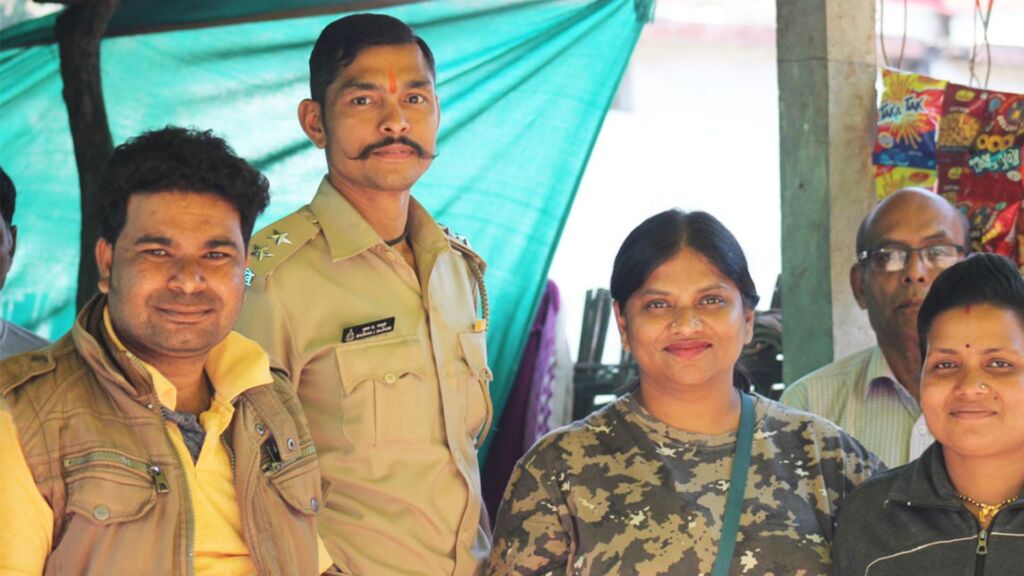Application of The Design Thinking Framework to a study that was conducted in Maharashtra and Karnataka can help understand the applied research, in solving community problems. Read on to delve into two real life Case Studies. Straight from the Forest of India!
Happy Reading!
Freeda
Design Thinking (DT) has been the buzzword in the corporate circles and one can see many programs of short-duration and long being churned out for the associates, and those interested to follow frameworks that will have qualitative ramifications in the world of business. A multitude of books with variants in the frameworks has come up, globally. For the uninitiated, DT is a human-centred approach for creating solutions by understanding, nay empathizing with the stakeholder who is seeking a solution to usher in the betterment of the business.
Having read and participated in a few of the programs on DT, we thought why don’t we make an effort to help our stakeholders, the forest-fringe communities with whom we work to understand how the community can be skilled and trained to work on various community-based ecotourism (CBE) projects across the country. The research though was part of a meta-analysis in a University in the USA and it gave a perspective to the outside world about the usage/implementation of time-tested management frameworks on communities who otherwise are at the mercy of government-oriented projects. Needless to say, the communities, though rural in all their attributes; adapted to our understanding of the DT framework, which helped us to “help the communities” and assuage the benefits. We adopted the globally renowned EDIPT (Empathize, Define, Ideate, Prototype, Test) framework, which has been worked on by Stanford School and the Indian Institute of Technology Madras (IITM) created: EAST (Empathize, Analyse, Solve and Test). A few samples to savour
Forest-Fringe Community In The Kali Tiger Reserve (KTR) – Karnataka:
Located in the Uttara Kannada (Karwar) district, the FD has created an Eco-Development Committee (EDC) that has been functioning since 2005 in the village of Nandigadde (Gund Panchayat). A 54-household village with a population of 190, with agriculture products like areca nut, paddy and banana as the mainstay and the community growing vegetables for household needs; Aurli was a phenomenal point of growth, for the community decided what they wanted, along with the FD and other stakeholders who helped with the interventions. The EDC embarked upon the following Ecotourism objective:
- Tourism Management of the Syntheri Rocks.
- Supporting themselves to build a protection wall (four kilometres) from wildlife (elephants, monkeys and porcupines).
- To provide Solar lamps for the community members.
- To provide for LPG.
- To build toilets.
- To solve drinking water problems.
- To construct a permanent structure for the visitors.
- To produce literature about the destination.
- To provide for sewing machines based on the community requirement.
- Maintain the road in the village.
- Participate with the FD for Forest Fire Control.
- Enrol patrolling to control poaching of wildlife, and
- Afforestation
During the focus group discussions (FGD); it was clear that the community wanted to adapt aspects and interventions that would help them in their day to day functioning rather than what the government and civil society would offer to platter up. DT in the case of Syntheri Rocks community simply got juxtaposed with their thought process, which was a forward-looking vehicle for development at the level of a village.






Forest-Fringe Community In The Tadoba-Andheri Tiger Reserve (TATR) – Maharashtra:
Located close to Chandrapur in Maharashtra, Agarzari is a success story, and the Eco-Development Committee (EDC) caters to the needs of the domestic and international visitors to showcase Tigers, has succeeded beyond anyone expectations. With about 45 households, and a small population who depend completely on Ecotourism activity, wherein, Tiger Safari has been the mainstay; it was the community that decided its fate, of course eagerly supported by the FD in Maharashtra whose focus was on reduction of poaching, illegal collection of forest produce and the overall preservation and conservation of the forest area.
The community at Agarzari has Agriculture as the mainstay occupation; with lands in the buffer of the Tiger Reserve. The researchers established that the community would also get to the forest for collecting the forest products from a historical perspective. However, this has come to a halt on account of the interventions of the Maharashtra Forest Department (MHFD) and the Revenue Administration departments of the state of Maharashtra. Agarzari got the first Buffer Tourism in 2011 in Maharashtra and Tadoba Andhari Tiger Reserve (TATR). The TATR area has a total of 91 villages with a population of 1 lakh. TATR becomes an epicentre for Human-Wildlife conflicts (HWC) considering the dependency on the forests by the community members. There was a time when the Gond Tribe was all over the area.
The Community has been weaned away from the forest area and has been provided for alternative livelihood options that are as follows:
- Owning of Gypsy vehicles for organizing the Safari through various gates in the vicinity of Agarzari
- Options to drive the Gypsy vehicles (Driver Job)
- Working in the Tent Accommodation (Agarzari Campsite) of the Forest Department through the EDC.
- The workforce in the Butterfly Park created through an EDC (Entry gate Collection, Interpretation Center and a Bamboo Souvenir Shop)
- Canteen being run through EDC in the Butterfly Park.
- Workforce: cooks for the Tented Accommodation (Agarzari Campsite) through the EDC.
- Working directly with the Forest Department as contract labour engaged in: i) Fireline creation, ii) Afforestation iii) Forest Census Activity
- Agarbathi (Incense stick) manufacturing facility.
- Non-Timber Forest Produce (NTFP) collection: “Mahua” flower collection once a year.
- The Local youth are involved in Nature Education and adventure activities. A place designated for the same, adjacent to the Agarzari campsite, outsourced to a partner from Chandrapur.
- Tourism and the inflow of tourists to Agarzari, has given rise to individual run eateries and Kirana shops, giving a source of income for the village folk of Agarzari.
- Maintenance and housekeeping staff are employed from the village at The Campsite, for adventure activities and Butterfly Park.
The genuine support and push that the Maharashtra Forest Department (MHFD) provided with committed forest officers, has ensured success for the community of Agarzari.
To conclude one can say that if anyone were to adopt the nuances of a human-centred approach in solving issues of the people, the community, the corporate; as done by Design Thinking, one will surely taste success.














